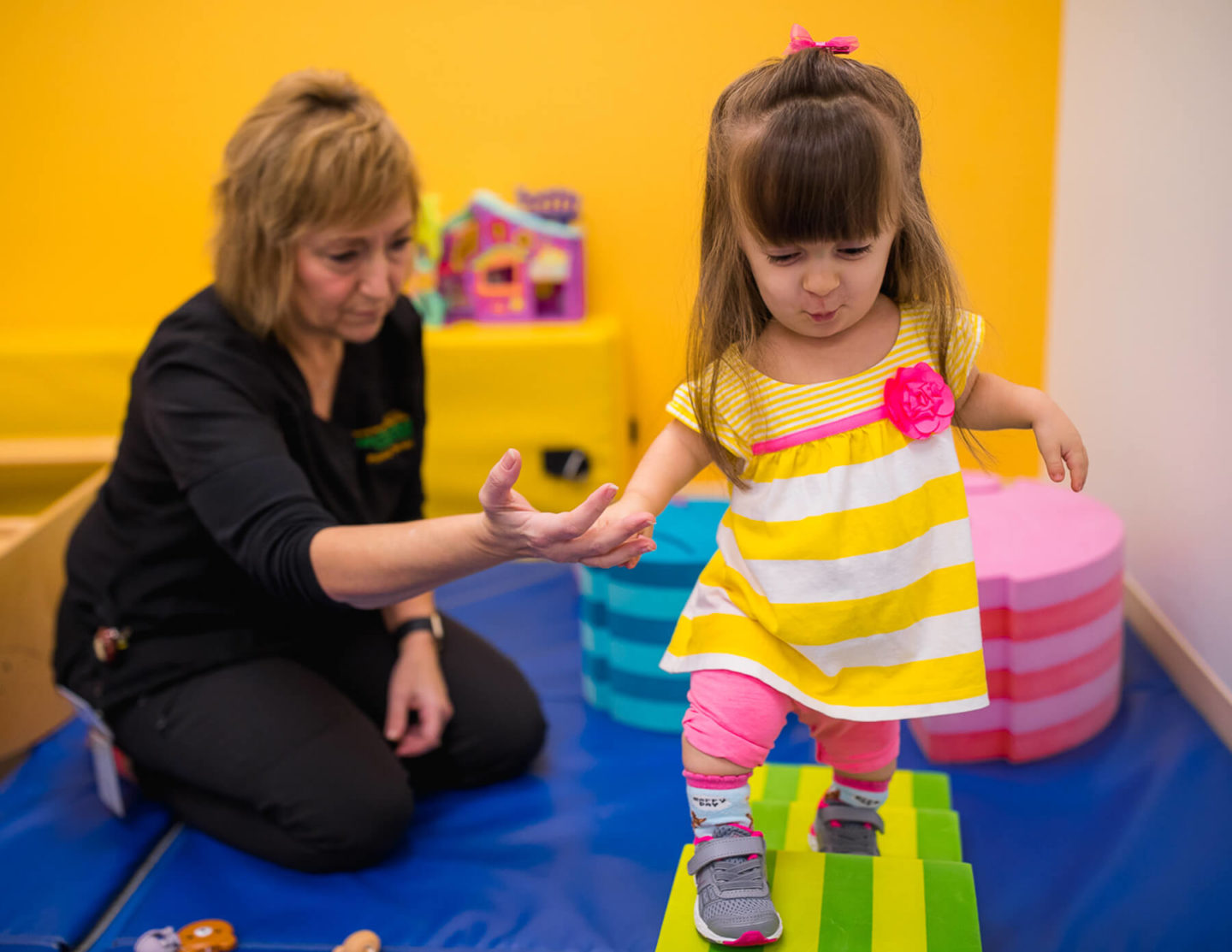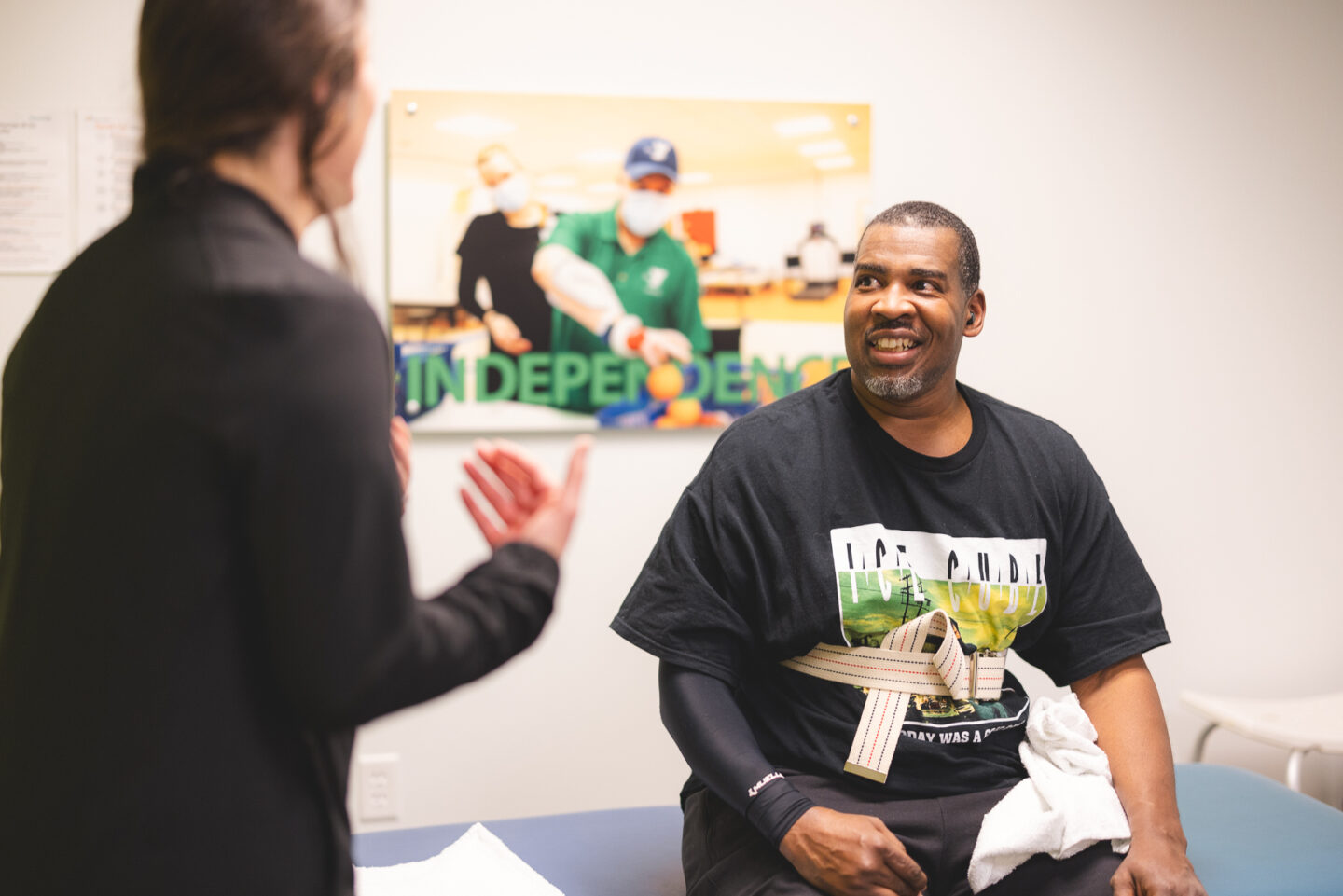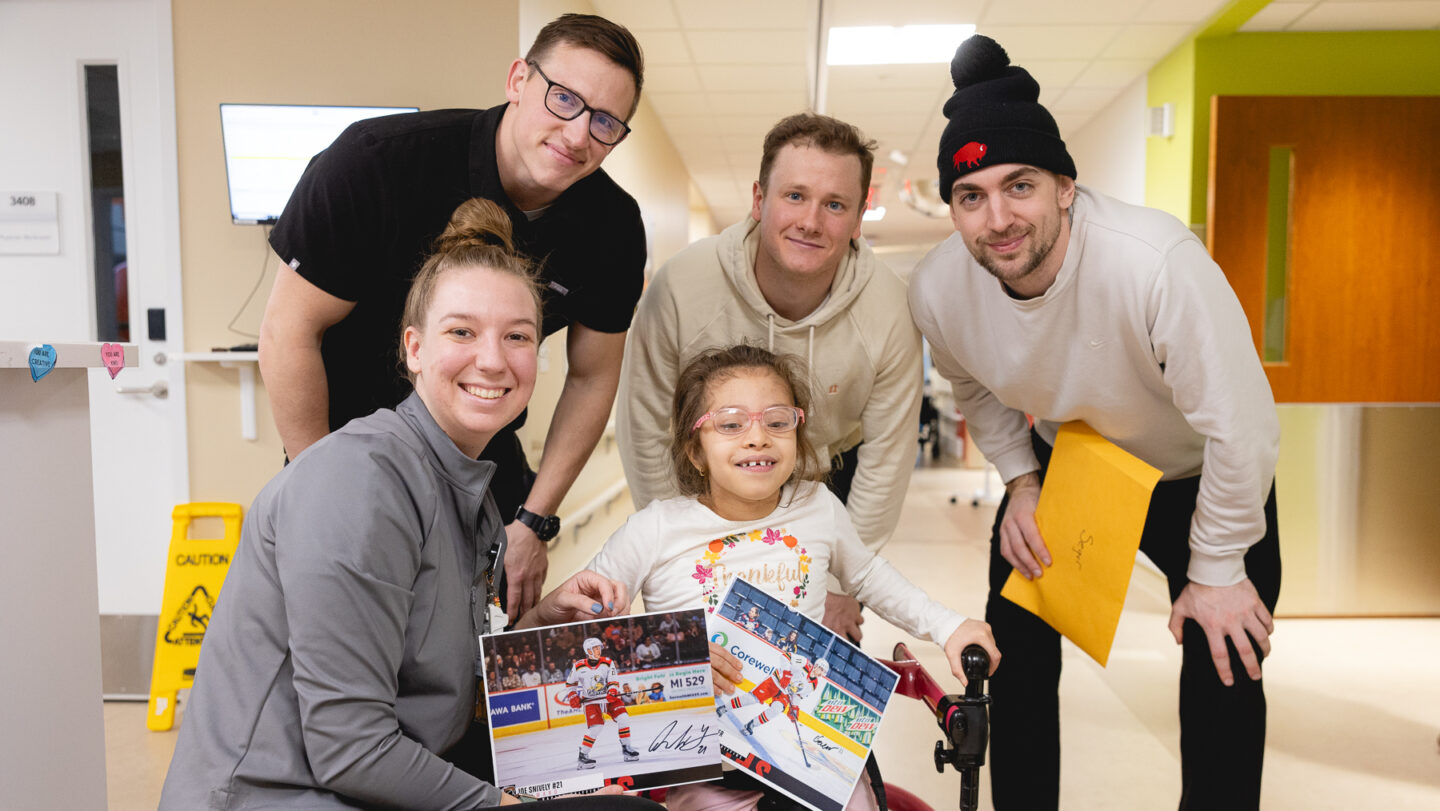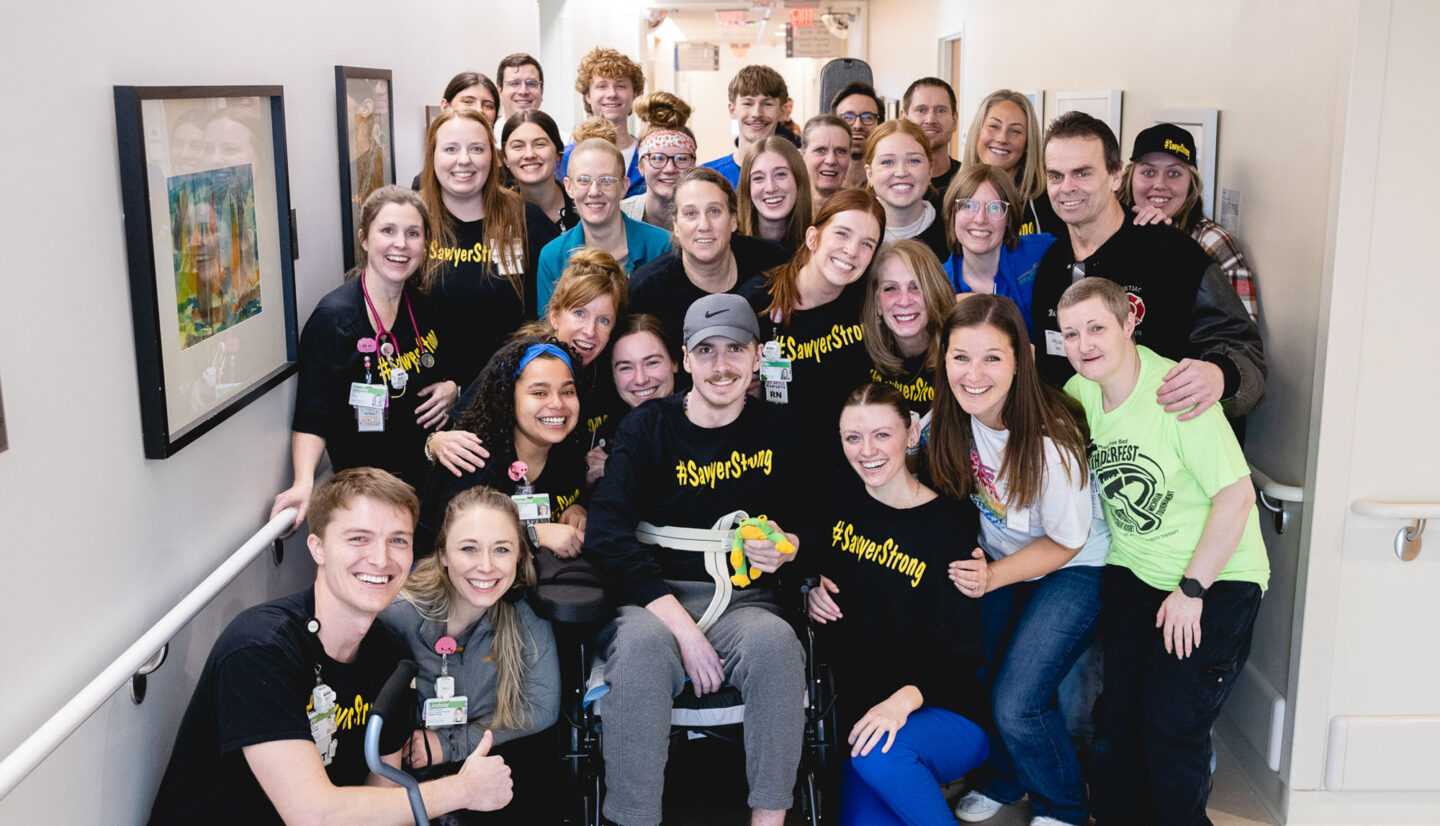Posted on May 1, 2019
Evelyn thrives in face of rare diagnosis of osteogenesis imperfecta
Evelyn Franchetti is a typical 3½-year-old. She loves singing and dancing, princesses and puppies.
When she arrives at preschool, Evelyn looks around the classroom and declares “These are my friends!” before scampering off to play, protected by her bright red walker.
The happy-go-lucky little girl doesn’t need the device to help her walk. It’s a shield.
Evelyn has osteogenesis imperfecta, a rare disorder commonly known as brittle bone disease. Caused by a genetic defect, OI is characterized by bones that break easily, sometimes from as little as a sneeze or a hug. According to the Osteogenesis Imperfecta Foundation, at least 20,000 people in the U.S. have OI.
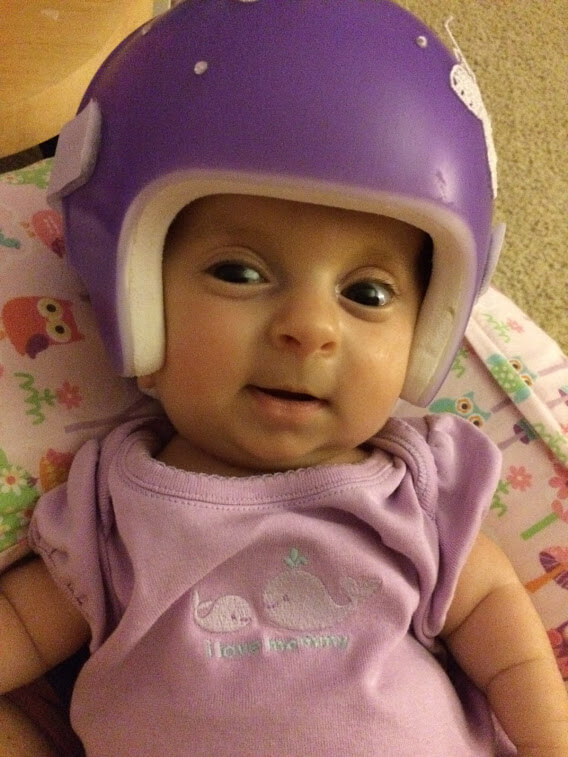 Evelyn was diagnosed in utero when doctors noticed a fracture in one of her femurs during an ultrasound.
Evelyn was diagnosed in utero when doctors noticed a fracture in one of her femurs during an ultrasound.
The diagnosis wasn’t a surprise to Drew and Dawn Franchetti. Drew has OI, and Dawn has achondroplasia, another rare genetic disorder that affects the musculoskeletal system. It’s the most common form of dwarfism. There’s no family history of either disorder.
“When we were interested in starting a family, we met with a geneticist,” Dawn said. “We learned our child had a 25 percent chance for only OI or achondroplasia, 25 percent chance of not receiving either gene or a 25 percent chance of receiving both.”
Dawn’s obstetrician ordered monthly ultrasounds to monitor the baby’s growth.
“When her bones started to develop, we noticed the fracture,” Dawn said. When Evelyn was born, the geneticist visited the Franchettis in the hospital and confirmed she also has achondroplasia. “With proper medical treatment, people with OI can live fulfilling lives.”
Evelyn’s journey with Mary Free Bed began when she was about five months old.
“She was having a hard time rolling over and developed a severe case of plagiocephaly, which is common in OI,” said Dawn, who left her job as a music teacher to care for Evelyn full time.
They worked with Mary Free Bed Orthotics & Prosthetics + Bionics clinicians, who fit Evelyn with a cranial remolding helmet to help her head grow correctly. Evelyn’s pediatrician referred her for physical therapy to develop strong muscles and safe movement.
“This is our third round of physical therapy,” Dawn said. “The first was to help with rolling over and lifting her head, the second to sit independently and stand, and now she’s a champion at walking.”
Julie Honeycutt, Evelyn’s physical therapist, said she continues to meet her goals.
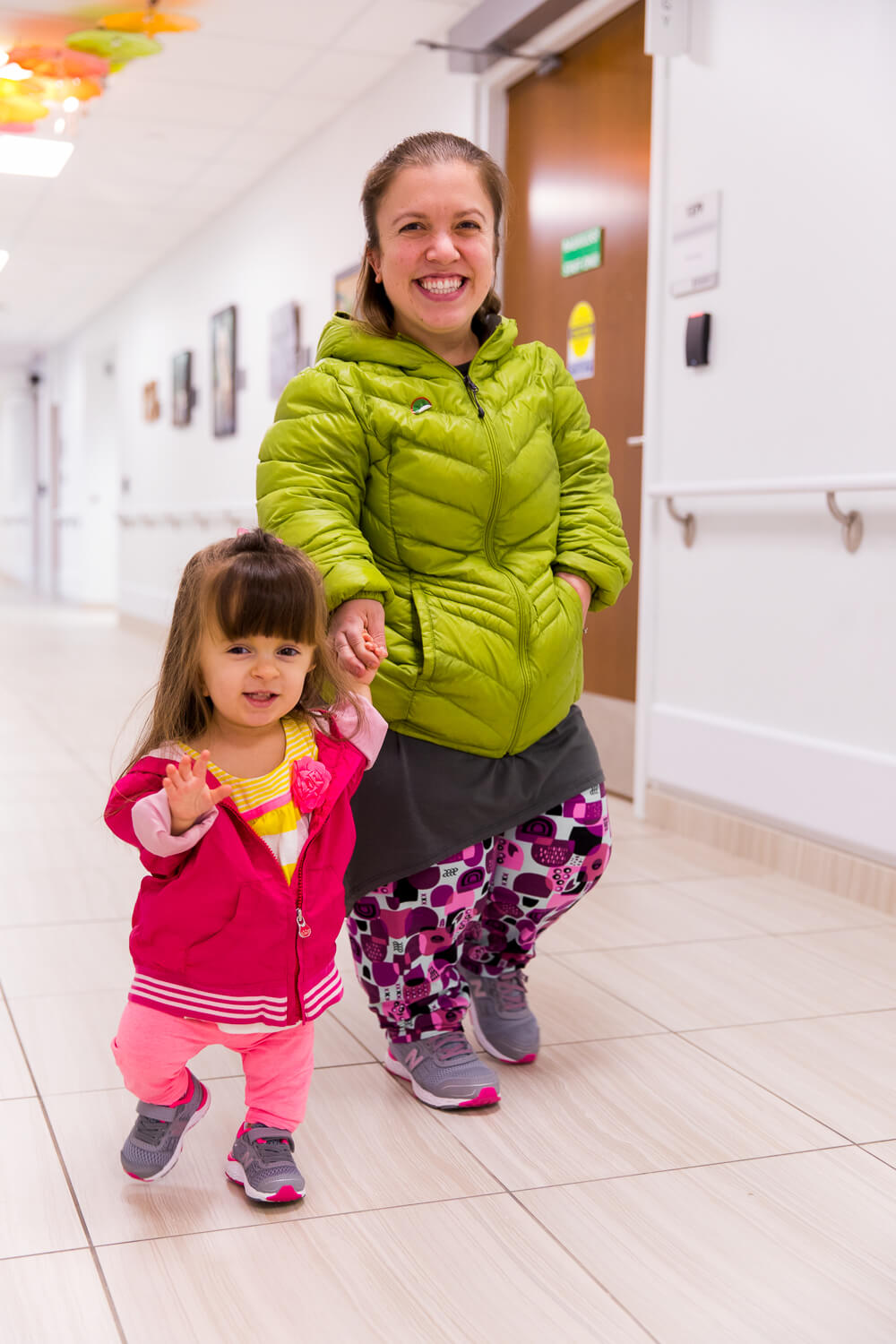 “When we got started, Evelyn was so fragile and mom was so afraid,” said Julie, who explained the need to minimize fractures and strengthen a variety of muscle groups, prevent contractures and long bone deformities, and maintain a straight spine.
“When we got started, Evelyn was so fragile and mom was so afraid,” said Julie, who explained the need to minimize fractures and strengthen a variety of muscle groups, prevent contractures and long bone deformities, and maintain a straight spine.
“This needed to be done slowly, but increasingly so Evelyn could do as much as she could with her muscles,” Julie said. “This was attained by gentle, graded and specific handling techniques, and lots and lots of teaching and repetition.”
The walker was ordered for support and protection in crowded environments.
“We can’t risk her getting knocked down,” Julie said. “She still falls occasionally and can catch herself, but we still have much more work to do, so she can be safe.”
Evelyn, for one, likes her visits to Mary Free Bed: “I like to play with the baby. I like the rocket. Julie is funny.”
Her physical therapy is part of an extensive medical care plan that includes infusions every four months to strengthen her bones. She also sees a geneticist, endocrinologist, orthopedist, pulmonologist and a cardiologist, who monitor her as she grows.
“Although we try to lead a ‘careful’ life, Evelyn has all the drive and more of an average 3½-year-old,” Dawn said. “She may be tiny and have fragile bones, but she loves to play dance and sing! No one should be afraid to say hi and become a friend.”
While Evelyn hasn’t experienced additional fractures, Dawn and Drew know she’s fragile and are diligent about safety. Working with Julie has been “so impactful,” Dawn said.
“There’s always going to be a concern, but we can’t live in fear either. Our hope for her is that she leads a fulfilling life and learns that even with differences she can do anything she sets her mind to.”



